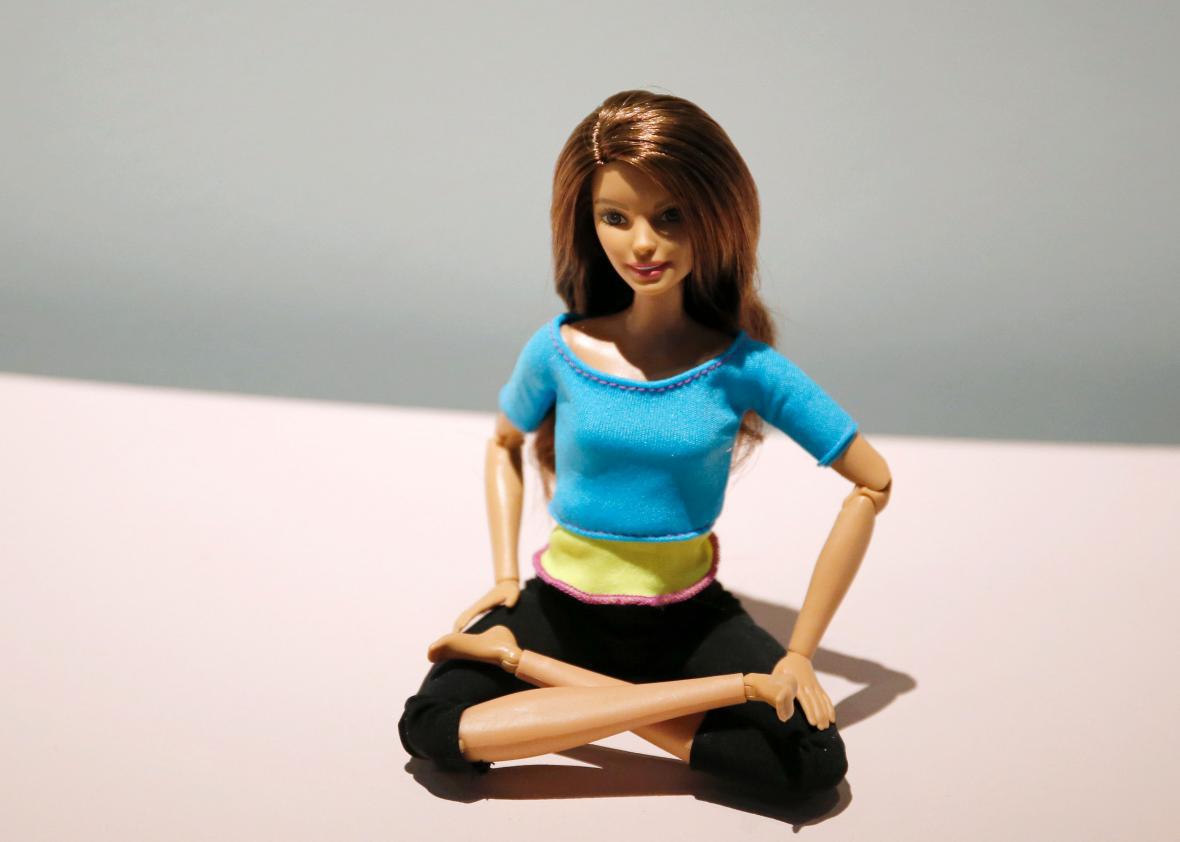Barbie, long a vehicle for delivering some of the patriarchy’s worst ideas directly into the hands of little girls, has spent the last few years trying to do better. Whether motivated by a desire to ward off declining profits, an impulse to make girls feel better about their bodies and future, or both, the changes have been swift and effective. Since 2015, Mattel has released an Ava Duvernay Barbie, Barbies with “petite,” “tall,” and “curvy” body types, and it announced that not-21-inch-waisted Amy Schumer will play Barbie in an upcoming live action film.
Advertising campaigns for the dolls have undergone a makeover as well. Long fixated on beauty and romance, recent Barbie commercials have dispensed narratives of confidence and ambition. When they do focus on fashion, as they did in this 2015 ad for Moschino Barbie, their progressive edge is maintained by the inclusion of a boy who is, by traditional notions, quite feminine. “Moschino Barbie is so fierce,” says a boy who is a Moschino-designer Jeremy Scott lookalike and makes the portrayal of gay men in the 1996 film The Birdcage seem understated. What’s been missing from these ads, and most other woke children’s marketing, is the presence of not identifiably feminine boys or men playing with toys associated with girls.
The latest Barbie ad campaign tries to fill this gap, with a clumsy yet endearing commercial about dads playing dolls with their daughters. The 90-second version, which pemiered during the recent NFL playoffs, begins with real dads issuing on-the-nose proclamations of their manliness; “I’m a typical man’s man,” says the first. Alas, all the testosterone in the world can’t prevent a guy from having a daughter, and those daughters from one day expecting to play dolls with them, so Barbies it is. We learn that the dads had non-pussifying fun and, according to the message at the end, boosted their daughters’ self-esteem.
Minor flaws aside, this commercial is a move in the right direction. It does what few, if any, marketing campaigns have done before and makes a traditionally girly activity seem more acceptable for boys and men. Previously, most of the attempts to upend gender stereotypes in toys have involved marketing what we might think of as boy stuff to girls, sending the message that it’s OK for girls to act like boys. Sadly, nobody’s telling the boys that it’s OK to act like girls.
The most beloved of these unidirectional gender-bending ads is probably GoldieBlox’s 2013 commercial about three girls who, unimpressed by the princesses on their television, design an elaborate Rube Goldberg machine to turn it off. It finishes with a closing shot of the girls, chests puffed out, arms crossed, jaws clenched. Other toy manufacturers would soon follow suit, like Nerf Rebelle in its 2016 campaign for a line of water guns and dart blasters designed to help girls “unleash their inner warrior.” That one features a group of Katniss Everdeen-styled tweens chanting, “We are strong. We are powerful. We are Nerf Rebelle.”
I’m still waiting for the universally adored counterexample in which a little boy gets to act sensitive and vulnerable losing himself in a beautifying ritual, domestic activity, or noncompetitive, winner- and loser-free pretend play with a collection of wide-eyed and weapon-free dolls or figurines. I have an older brother who loved playing Barbies with my younger sister when he was an otherwise stereotypically boyish 10-year-old (a loosely guarded family secret up until now), and a 4-year-old son who chose a purple, sparkly, flower-shaped ring from the toy box at the doctor’s office just this morning. These boys are out there, and they could use a little encouragement.
Research shows that preschool girls tend to become more open to a wider range of toys as they age, while boys become more stubborn in their loyalty to boy toys. As Slate’s Hanna Rosin pointed out in 2012, this is likely because “boys pay a higher penalty for diversifying. No one looks twice when a girl plays hoops or drives a toy race car; in fact it’s probably considered pretty cool. But a boy with a doll is still almost as alarming to many parents as it was in 1970.” The new Barbie ad won’t undo this double standard on its own, but it should nudge us a little closer to an age when boys and men, including your “typical man’s man,” won’t feel threatened by the presence of a glossy-haired plastic woman in their hand.
